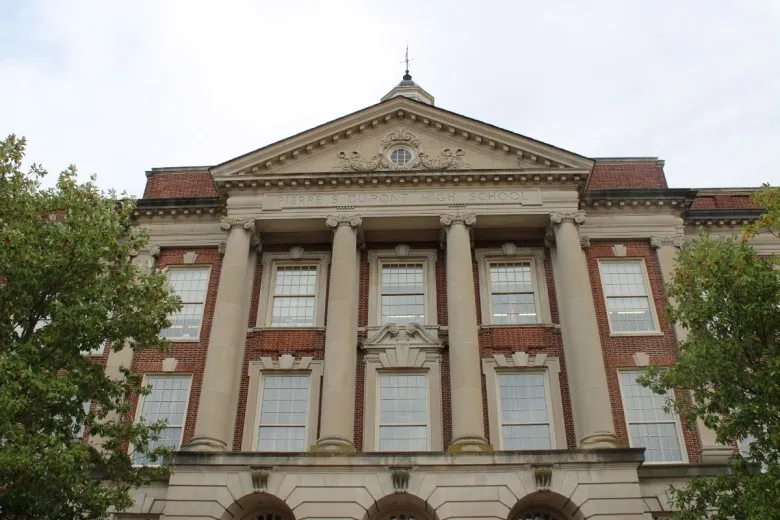
As Delaware explores ways to improve public education funding and support for students, a new challenge has emerged: a mounting backlog of deferred maintenance across schools statewide. A recent evaluation conducted by the Delaware Department of Education has revealed over 1,200 repair needs across the state’s school buildings, ranging from minor cosmetic issues to major concerns such as leaky roofs, outdated air conditioning, and malfunctioning dehumidifiers.
Many schools in Delaware, particularly those built during the Great Depression, are now in need of significant repairs. Senate Bill 270 mandated the creation of a statewide evaluation tool for school facilities, enabling a comprehensive assessment of the state’s schools, which had previously tracked their own facility needs.
Each district submitted its evaluation and a board-approved maintenance plan to the Department of Education in May, though the Colonial School District in New Castle missed the deadline, citing the extensive effort required to complete the evaluation.
The statewide review, analyzed by Spotlight Delaware through a Freedom of Information Act request, identified over 1,200 repairs of varying severity. Spotlight Delaware then visited several schools to evaluate the condition of the facilities. While districts appreciated the tool’s ability to offer a clearer picture of their needs, many voiced concerns over their ability to fund necessary repairs.
The Brandywine School District led the state in identified repairs, with 235 issues noted across its buildings. John Read, Brandywine’s Director of Facilities, highlighted the challenges of maintaining aging schools like P.S. du Pont Middle School, which was built in 1935. Read explained that projects often go unnoticed but come at high costs, such as the $200,000 expense to repair bricks on the gym.

P.S. du Pont, which underwent renovations in 2007, exemplifies the district’s efforts to maintain older buildings. The district installed an energy-efficient HVAC system in 2003, which helped improve air quality and reduce energy costs. However, other issues, such as the inability to dehumidify certain buildings, remain a concern. Read noted that upgrading these systems could cost millions, further straining the district’s budget.
When requesting funding for new schools, expansions, or major renovations, districts must submit a request through the Certificate of Necessity (CN) process. If approved, the state covers 60% of the project cost through bonds, while the district is responsible for the remaining 40%, typically through a local referendum.
Brandywine recently sought state approval for major renovations at Mount Pleasant Elementary and High Schools, with an estimated $76.3 million required for the renovation of Mount Pleasant Elementary. Mount Pleasant's aging infrastructure includes leaks, outdated windows, and classrooms that don’t meet state size standards. Principal Matthew Auerbach expressed frustration with these ongoing issues, saying, "We’re putting lots of band-aids on these larger problems that we have in our school."
In the Indian River School District, which identified 154 repair needs, facilities supervisor William “Joe” Dooley faces difficulties in addressing the district’s aging infrastructure due to limited funding for minor capital improvements. The district has become creative in using grants to fund projects without drawing from the limited capital improvement budget.
Some older schools in the district, like Georgetown Middle School, built in 1930, struggle with outdated facilities. Principal David Carter shared that priority is often given to pressing repairs, leaving less attention for enhancing the school’s atmosphere, such as restoring faded school colors.
As some districts face the growing cost of repairs, others are considering whether building new schools might be more cost-effective than continuing to renovate old ones. Doug Henry, the supervisor of buildings and grounds in Seaford, pointed out that the cost of renovating an old school may surpass the cost of building a new one. He noted, "At some point, it’s just cheaper to build a building than it is to maintain."
Seaford’s schools, including the 96-year-old Seaford Middle School, continue to face significant challenges, with windows falling out and water damage affecting the building’s structure. Henry remarked that the extensive repairs needed to address these issues might ultimately cost more than constructing a new school.
The Delaware Department of Education has emphasized that the evaluation tool is not meant to rank districts but to provide valuable insights into the scope of repairs needed. Jamie Mack, an education associate with the department, stated, “We want to review the first year, see where [districts] are in the second year, and work to support the schools to continue to address the issues.”
Despite receiving increased support for minor capital improvements, districts remain concerned about the larger funding needed for major repairs and renovations. Dooley expressed frustration, stating, “If the state denies that [request], we either have to not do those projects or we have to do the amount of minor capital money, and that gets tough to do because there’s not enough minor cap money available to do all the stuff that we need to do.”